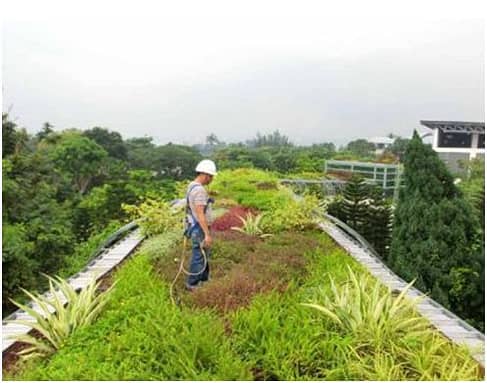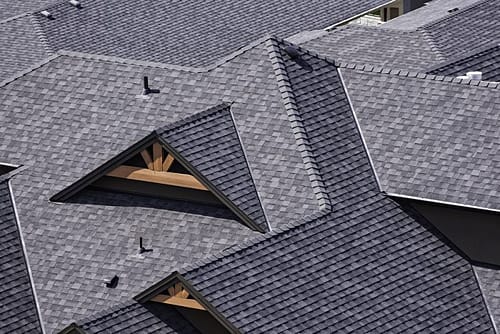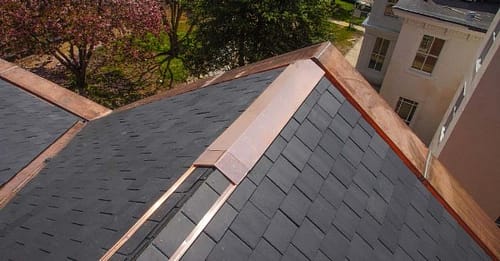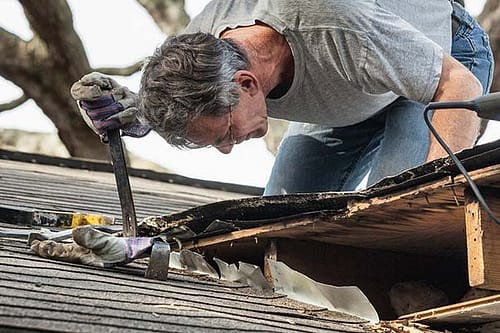Roof tiles can be subdivided into both material and shape. In this article, you can read more about the differences between ceramic and concrete roof tiles and their benefits and characteristics.
Concrete roof tiles (quick cover tiles):
Concrete roof tiles are made from a mixture of sand, cement, and any additives. They are cheaper than ceramic roof tiles and are therefore frequently used. Concrete roof tiles are available in both corrugated and flat roof tiles and can be provided with a side closure or a head closure. The method of closing the roof tiles is important because of the water-tightness of the roof.
Concrete roof tiles can be provided with a special coating which makes it less easy for dirt, algae, and moss to adhere to the roof. This extra protective layer also ensures an extra-long service life for the roof tiles.
Advantages of concrete roof tiles:
– Concrete pans are cheaper than clay roof tiles and are generally very quick to install.
– Frost-free and resistant to UV rays and other weather influences.
– Complex shapes can easily be finished with fittings (ridge pan, bottom pan, etc.).
– The lifespan is more than 30 years.
– Less harmful to the environment because concrete tiles do not have to be baked like clay roof tiles.
Ceramic roof tiles (clay roof tiles):
Ceramic roof tiles are made from baked clay. Just like concrete roof tiles, they are available in a flat or corrugated version. Clay roof tiles have a beautiful natural appearance and are very durable. The variety of this type of roof tile is large and nowadays, in addition to the traditional models, extra-large models are available so that they can be installed faster.
Ceramic roof tiles can be finished with a glaze layer so that dirt, moss, and algae cannot easily adhere to the roof. Ceramic roof tiles can also be given a color. This is done through a special production process where the roof tile is sprayed with a clay-containing suspension to which metal oxides have been added.
Advantages of ceramic roof tiles:
– Clay is a natural product that makes a roof with ceramic tiles look more authentic.
– Glazed clay pans are resistant to dirt, moss, and algae.
– Long service life (fifty years and longer) = price/quality favorable.
Types of roof tiles in accordance with shape:
You can distinguish roof tiles as hollow roof tiles and flat roof tiles. The choice of a specific shape of the roof tile depends on the slope of the roof. For example, when using tile tiles, the roof must have a slope of at least 35 degrees. Softly undulating roof tiles, such as the storm tile, can already be laid with a roof slope of 20 to 25 degrees. It is important to take this into account because a wrong choice can lead to leaks in the long term.
Hollow roof tiles:
There are three types of hollow roof tiles: hollow roof tiles without closure, hollow tiles with closure and tiles with a slight undulation. The normal hollow pan has a curved shape without closure and is especially suitable for roofs with a minimum slope of 25 degrees. The hollow roof tile with closure has a head closure that follows the shape of the pan. This type of roof tile is suitable for roofs with a slope between 22 and 25 degrees.
Tiles with a slight undulation can also be used with a slightly sloping roof (20 degrees). This depends on the roof tile model.
Flat roof tiles:
There are three types of flat roof tiles: flat roof tiles with ribs and fasteners, flat roof tiles with fasteners and tiles.
Flat roof tiles with ribs and closures are characterized by the presence of a central rib that provides extra strength. The shape is usually slightly wavy. This type of roof tile can be used on roofs with a minimum slope of 25 degrees.
Flat roof tile with closure. By applying this type of roof tile the roof gets a flat view. Depending on the roof tile model, a minimum slope between 24 and 35 degrees is required.
These flat roofs are only used for steep roofs with a minimum slope of 35 degrees. Tile tiles give the roof a flat appearance and are placed crosswise on top of the roof, leaving approximately 33% of the pan visible.




